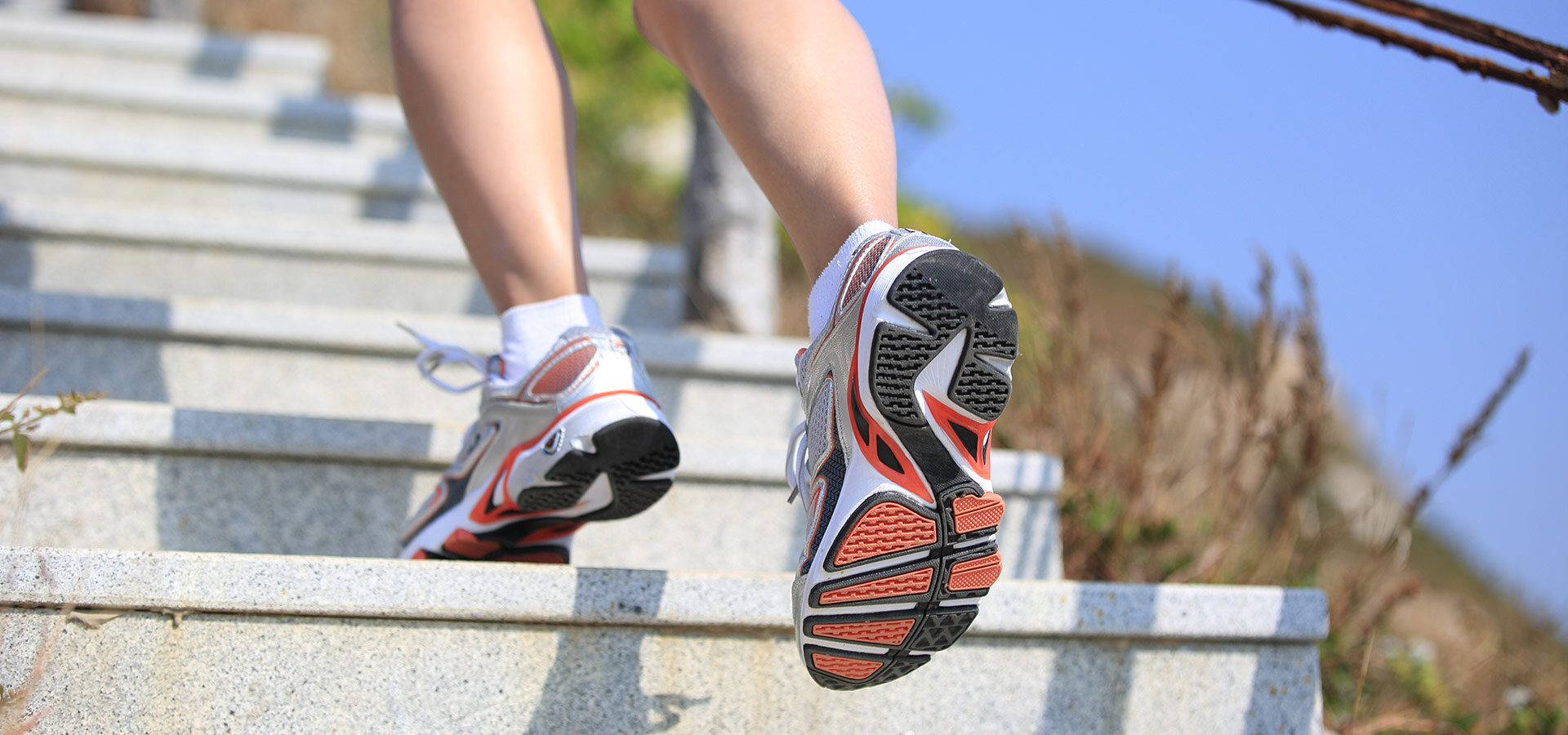Contents
- I. Benefits of Stair Climbing Exercises
- II. How to Get Started with Stair Climbing Exercises
- III. Tips for Safe and Effective Stair Climbing
- IV. Stair Climbing vs. Other Cardio Exercises: Which is Better?
- V. Targeted Muscle Groups and Body Benefits of Stair Climbing
- VI. Frequently Asked Questions about Stair Climbing Exercises
- 1. Is stair climbing a good form of exercise?
- 2. How many calories can I burn by stair climbing?
- 3. Can stair climbing help with weight loss?
- 4. Do I need any special equipment for stair climbing exercises?
- 5. Are there any precautions I should take before starting a stair-climbing routine?
- 6. How often should I include stair clim
I. Benefits of Stair Climbing Exercises

Stair climbing exercises offer numerous benefits for individuals seeking to improve their fitness levels and overall health. Incorporating this simple yet effective form of exercise into your routine can lead to significant improvements in cardiovascular endurance, muscular strength, and weight management. Let’s explore some of the key benefits that stair climbing exercises provide:
1. Cardiovascular Health Improvement
Stair climbing is a highly effective cardiovascular exercise that gets your heart pumping and increases blood circulation throughout your body. By regularly engaging in stair climbing exercises, you can strengthen your heart muscle and improve its ability to efficiently pump oxygenated blood to all parts of your body. This leads to enhanced cardiovascular health, reduced risk of heart disease, and improved overall stamina.
2. Muscle Strengthening
One of the main benefits of stair climbing exercises is that they engage multiple muscle groups simultaneously. As you climb stairs, major muscles such as the quadriceps in your thighs, glutes in your buttocks, hamstrings at the back of your thighs, and calves are all activated and strengthened. Additionally, by using proper posture during stair climbing exercises, you also engage core muscles which contribute to better stability and balance.
3. Weight Management
If weight loss or weight management is one of your goals, incorporating stair climbing exercises into your routine can be highly beneficial. Stair climbing is an excellent calorie-burning activity that helps you shed excess pounds while toning muscles at the same time. The intensity level involved in ascending stairs allows for a higher caloric burn compared to many other forms of exercise.
4.Bone Density Enhancement
Regularly performing stair climbing exercises puts stress on bones due to gravitational force acting upon them during each step. This weight-bearing activity helps stimulate bone cells to build and strengthen bones, thus reducing the risk of osteoporosis and improving overall bone density.
5. Convenience and Accessibility
Stair climbing exercises can be easily incorporated into your daily routine since stairs are readily available in most environments. Whether it’s climbing the stairs at home, work, or using a stair climber machine at the gym, this exercise option offers convenience without requiring any specialized equipment.
II. How to Get Started with Stair Climbing Exercises

If you’re looking for a challenging and effective workout that can be done anywhere, stair climbing exercises are a fantastic option. Whether you have access to a staircase at home or prefer utilizing the stairs in your office building, this form of exercise can help you improve your cardiovascular fitness, build strength in your lower body, and burn calories.
1. Warm up before you start
Before diving into your stair climbing routine, it’s essential to warm up properly. Perform dynamic stretches such as leg swings or lunges to loosen up the muscles in your legs and hips. This will help prevent injuries and prepare your body for the workout ahead.
2. Start slow and gradually increase intensity
If you’re new to stair climbing exercises or haven’t been active for a while, begin at a comfortable pace that suits your fitness level. As you become more accustomed to the workouts, gradually increase the duration and intensity of each session by adding extra flights of stairs or incorporating intervals.
3. Maintain proper form
Paying attention to your form is crucial during stair climbing exercises as it helps prevent strain on joints and muscles while maximizing efficiency. Keep an upright posture with shoulders back, engage your core muscles for stability, and push through each step using the power of your glutes and hamstrings.
4. Mix it up with different variations
To keep things interesting and challenge different muscle groups within your lower body, try incorporating various stair climbing variations into your routine. These include skipping steps to engage more calf muscles or performing lateral step-ups on each flight of stairs.
5. Track progress and set goals
To stay motivated during any fitness journey, it’s essential to track your progress and set achievable goals. Monitor the number of flights climbed, time taken, or calories burned during each workout session. Setting small milestones will help you stay focused and celebrate your achievements along the way.
Remember, consistency is key when it comes to reaping the benefits of stair climbing exercises. Aim for at least three sessions per week and gradually increase the duration or intensity as your fitness improves. With dedication and perseverance, you’ll soon experience improved cardiovascular health, increased lower body strength, and enhanced overall fitness.
III. Tips for Safe and Effective Stair Climbing

Climbing stairs is a fantastic exercise that not only helps you stay fit but also strengthens your leg muscles. Whether you’re climbing the stairs in your home, at work, or in a public area, it’s important to follow some safety tips to prevent injuries and make the most out of your workout.
1. Warm up before climbing
Prior to starting your stair climbing session, it’s essential to warm up your body. Perform dynamic stretches such as leg swings or marching in place for a few minutes. Warming up increases blood flow to the muscles and prepares them for physical activity.
2. Use proper footwear
Wear comfortable athletic shoes with good support when climbing stairs. Avoid high heels, flip-flops, or shoes that don’t provide adequate stability and cushioning. The right footwear will help prevent slips and falls while keeping your feet comfortable throughout the workout.
3. Maintain correct posture
Pay attention to your posture while climbing stairs to avoid strain on your back and knees. Keep your spine straight, shoulders relaxed, head facing forward, and engage core muscles slightly by pulling in the belly button towards the spine.
4. Take one step at a time
Avoid rushing through each step; instead, focus on taking one step at a time with control and balance. This technique allows you to engage more muscle groups effectively while reducing the impact on joints.
5. Engage both legs equally
To distribute effort evenly across both legs during stair climbing exercises, ensure that you push off from each foot with equal force when ascending or descending steps.
6.Stay hydrated
Drink enough water before, during, and after your stair climbing workout to stay hydrated. Proper hydration supports optimal performance and prevents muscle cramps or fatigue.
7. Increase intensity gradually
If you’re new to stair climbing exercises or haven’t been active for a while, start with a comfortable pace and gradually increase the intensity over time. Pushing yourself too hard from the beginning can lead to muscle soreness or injury.
8. Listen to your body
Pay attention to any discomfort or pain during your stair climbing session. If something doesn’t feel right, take a break, and consult with a healthcare professional if needed. It’s important to prioritize safety and avoid pushing through severe pain.
Remember that incorporating stair climbing into your fitness routine is an excellent way to improve cardiovascular health and strengthen your lower body muscles. By following these tips for safe and effective stair climbing, you can maximize the benefits of this exercise while minimizing the risk of injuries.
IV. Stair Climbing vs. Other Cardio Exercises: Which is Better?

When it comes to cardio exercises, there are numerous options available, each with its own set of benefits and drawbacks. Among these choices is stair climbing, which has gained popularity in recent years due to its effectiveness in burning calories and improving overall fitness levels. However, how does stair climbing compare to other cardio exercises? Let’s take a closer look.
The Benefits of Stair Climbing
Stair climbing offers several advantages that make it a great option for those looking to incorporate cardio workouts into their routine. Firstly, it engages multiple muscle groups simultaneously, including the legs, glutes, and core. This means you can effectively tone and strengthen various areas of your body while getting your heart rate up.
In addition to strength building, stair climbing is also an excellent calorie burner. As per research studies conducted by the Harvard Medical School, a person weighing around 155 pounds can burn approximately 334 calories during just 30 minutes of vigorous stair climbing exercise.
Furthermore, stair climbing doesn’t require any special equipment or gym membership – all you need is access to a set of stairs! This makes it an affordable and convenient option for individuals who prefer exercising at home or want to add variety to their workout routine without spending extra money on equipment.
The Alternatives: Running and Cycling
If you’re not fond of stairs or want more variety in your cardio workouts, running and cycling are two popular alternatives worth considering.
Running: Running is a high-impact exercise that improves cardiovascular endurance while targeting similar muscle groups as stairs do but with less emphasis on the glutes due to the absence of vertical movement. It provides an opportunity for outdoor exploration while burning calories effectively.
Cycling: Cycling is a low-impact exercise that is gentle on the joints, making it suitable for people with joint issues. It primarily targets the lower body muscles while offering an enjoyable way to explore your surroundings or even commute. Additionally, cycling allows you to adjust the intensity based on your fitness level and preferences.
Choosing What Works Best for You
The choice between stair climbing, running, or cycling ultimately depends on your personal preferences, fitness goals, and any physical limitations you may have. Consider factors such as convenience, accessibility of stairs or outdoor routes, impact on joints, and overall enjoyment when making a decision.
To maximize the benefits of any cardio exercise routine and avoid plateauing effects from repetitive movements over time, it’s advisable to incorporate a combination of exercises into your weekly schedule. This will help keep things interesting while targeting different muscle groups and continuously challenging your cardiovascular system.
Stair climbing offers unique advantages such as engaging multiple muscle groups simultaneously and being an effective calorie burner without requiring any special equipment. However, running and cycling provide alternative options that offer varied benefits depending on individual preferences and circumstances. Ultimately, choosing what works best for you involves considering factors like convenience, accessibility, impact, joints,, goals,
.
V. Targeted Muscle Groups and Body Benefits of Stair Climbing
1. Legs and Glutes
Stair climbing is a fantastic exercise for toning and strengthening your leg muscles, including the quadriceps, hamstrings, calves, and glutes. With each step you take, these muscle groups engage to lift your body weight against gravity.
By regularly incorporating stair climbing into your fitness routine, you can expect to see improved muscle definition in your legs and glutes over time. Not only will this enhance your overall appearance, but it will also provide a solid foundation for better balance and stability.
2. Core Muscles
The core muscles play a crucial role in maintaining proper posture while ascending stairs. These muscles include the abdominals, obliques, and lower back muscles.
To stabilize yourself during stair climbing movements, your core engages to keep your torso upright. This constant activation of the core helps strengthen these muscles over time and contributes to improved balance during daily activities.
3. Cardiovascular Health
Stair climbing is an excellent cardiovascular exercise that gets your heart pumping faster than walking or jogging on flat ground.
This high-intensity workout increases the demand for oxygen-rich blood throughout the body as you climb up those steps. Regularly engaging in stair climbing exercises can improve cardiovascular endurance by strengthening both the heart muscle itself as well as enhancing its ability to pump blood efficiently.
4. Calorie Burning
If shedding excess weight or maintaining a healthy weight is one of your goals, stair climbing should be part of your fitness regimen.
This form of exercise burns calories at a higher rate compared to many other activities like walking or cycling on level ground since it involves both strength and cardiovascular components. Regular stair climbing sessions can help you achieve your weight management goals more effectively.
5. Bone Health
Stair climbing is considered a weight-bearing exercise, meaning it puts stress on your bones, which helps maintain and improve bone density.
The impact of each step stimulates the bones in your legs, hips, and lower back to grow stronger. This can be particularly beneficial for individuals at risk of osteoporosis or those looking to prevent age-related bone loss.
Incorporating stair climbing exercises into your fitness routine offers numerous benefits for various muscle groups throughout the body. From toning and strengthening the legs and glutes to improving cardiovascular health and bone density, this simple yet effective activity delivers results that go beyond just burning calories. So why not take the stairs next time? Your body will thank you!
VI. Frequently Asked Questions about Stair Climbing Exercises
1. Is stair climbing a good form of exercise?
Absolutely! Stair climbing is an excellent form of exercise that can provide numerous benefits for your overall health and fitness. It is a great cardiovascular workout that helps to strengthen your leg muscles, improve endurance, and burn calories.
2. How many calories can I burn by stair climbing?
The number of calories burned during stair climbing depends on various factors such as your weight, speed, and intensity of the exercise. On average, you can expect to burn around 500-700 calories per hour during vigorous stair climbing.
3. Can stair climbing help with weight loss?
Yes, incorporating regular stair climbing into your fitness routine can aid in weight loss efforts. As a high-intensity workout that engages multiple muscle groups simultaneously, it promotes calorie burning and boosts metabolism.
4. Do I need any special equipment for stair climbing exercises?
No specialized equipment is required for basic stair climbing exercises; all you need are stairs! However, if you want to add resistance or intensify your workouts further, you may consider using ankle weights or carrying light dumbbells while ascending the stairs.
5. Are there any precautions I should take before starting a stair-climbing routine?
Prior to beginning any new exercise regimen like stair climbing, it is always advisable to consult with a healthcare professional—especially if you have pre-existing health conditions or concerns regarding joint health or balance issues.
6. How often should I include stair clim

Shelby Cortez is a dynamic and passionate individual with a strong background in the fitness industry. With a Bachelor’s degree in Exercise Science from the prestigious University of California, she has gained extensive knowledge about the human body and its mechanics. Shelby’s dedication to fitness goes beyond her education, as she has spent years honing her skills as a personal trainer and group fitness instructor. Her expertise in workout routines and nutrition has helped countless individuals achieve their fitness goals. Shelby’s commitment to health and wellness is evident in her own lifestyle, as she consistently pushes herself to new limits in the gym. Whether it’s weightlifting, yoga, or HIIT workouts, Shelby Cortez is the go-to expert for all things fitness-related.
